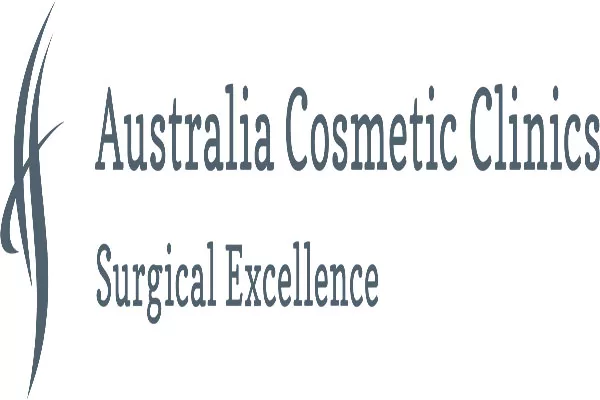Facial surgery procedures have become increasingly popular in the last few years. One of the most well-known facial surgeries is the facelift, also known as a rhytidectomy. This procedure involves tightening and smoothing out the skin on the face, resulting in a more youthful appearance. While a facelift can produce excellent results, it is important to understand what it entails and whether it is the right choice for you. In this article, we will explore the ins and outs of facial surgery, focusing on the facelift procedure. We will discuss what a facelift is, who is a good candidate for the procedure, the types of facelifts available, the risks involved, and what to expect during recovery.
What is a Facelift?
A facelift is a surgical procedure designed to reduce the signs of aging on the face and neck. It involves removing excess skin, tightening the underlying muscles and tissues, and repositioning the skin to create a more youthful and refreshed appearance. A facelift can address a number of concerns, including:
- Sagging skin on the cheeks, jowls, and neck
- Deep lines and wrinkles around the mouth and nose
- Loss of volume in the cheeks and temples
- Folds and creases on the forehead
There are several different types of facelift surgeries available, each targeting specific areas of the face and neck. Your surgeon will discuss the options with you during your consultation to determine which type of facelift is best suited to your needs.
Who is a Good Candidate for a Facelift?
While a facelift can be an effective way to address signs of aging on the face, it is not the right choice for everyone. Generally, good candidates for a facelift:
- Are in good overall health and do not have any medical conditions that could increase the risk of complications during surgery
- Do not smoke or are willing to quit before and after the procedure
- Have realistic expectations about the outcome of the procedure
- Are bothered by visible signs of aging on the face and neck, such as sagging skin, wrinkles, and jowls
- Have sufficient skin elasticity to allow for proper healing and a successful outcome
- Are willing to follow all pre- and post-operative instructions provided by the surgeon
- Have a positive outlook and a strong support system
Your surgeon will evaluate your medical history, assess your skin and facial structure, and discuss your goals and expectations to determine whether you are a good candidate for a facelift. It is important to be honest and open about your health and lifestyle habits to ensure a safe and successful procedure.
Types of Facelift Procedures
There are several different types of facelift procedures, each designed to target specific areas of the face and neck. The most common types of facelifts include:
- Full Facelift: A full facelift addresses the entire face and neck, including the forehead, cheeks, jowls, and neck. This procedure involves making incisions behind the hairline and around the ears to access the muscles and tissues that need to be tightened. A full facelift can produce dramatic, long-lasting results, but it is also the most invasive and has the longest recovery time.
- Mini Facelift: A mini facelift is a less invasive alternative to a full facelift. It targets the lower two-thirds of the face, addressing sagging skin and wrinkles around the mouth, nose, and jawline. This procedure involves smaller incisions and a quicker recovery time than a full facelift.
- Mid Facelift: A mid facelift focuses on the area between the lower eyelids and the mouth, addressing sagging skin and deep lines around the cheeks and lower eyelids. This procedure involves smaller incisions and a shorter recovery time than a full facelift.
- Lower facelift: A lower facelift targets the jawline and jowls, addressing sagging skin and defining the chin and neck. This procedure also involves smaller incisions and a shorter recovery time than a full facelift.
Your surgeon will discuss the options with you during your consultation and help you determine which type of facelift is best suited to your specific concerns and goals.
Risks and Complications
As with any surgical procedure, a facelift comes with some risks and potential complications. These can include:
- Bleeding
- Infection
- Scarring
- Swelling and bruising
- Nerve damage
- Hair loss at the incision sites
- Poor wound healing
- Anesthesia complications
It is important to choose a board-certified plastic surgeon with extensive experience in facial surgeries to minimize the risk of complications. Following all pre- and post-operative instructions provided by your surgeon can also help reduce the risk of complications and ensure a successful outcome.
It is crucial to have realistic expectations about the outcome of the procedure and to understand that the results of a facelift are not permanent. While a facelift can produce a more youthful appearance, it cannot stop the aging process. Regular maintenance and follow-up procedures may be necessary to maintain the results.
Lastly, it’s important to speak with your surgeon about possible risks and complications and make an informed decision together.
Before the Procedure
If you decide to move forward with a facelift, there are several steps you can take to prepare for the procedure and ensure the best possible outcome.
First, be sure to choose a reputable, board-certified plastic surgeon who specializes in facial surgeries. Research potential surgeons thoroughly, read reviews, and schedule consultations to discuss your goals and ask any questions you may have.
During your consultation, your surgeon will evaluate your medical history and assess your skin and facial structure to determine whether you are a good candidate for the procedure. They will also discuss the different types of facelifts available and help you determine which one is best suited for your goals and concerns.
In the weeks leading up to your surgery, you may be asked to:
- Quit smoking: Smoking can interfere with healing and increase the risk of complications. If you smoke, you will need to quit for a few weeks before and after the procedure.
- Avoid certain medications and supplements: Your surgeon may ask you to avoid blood-thinning medications and supplements that can increase the risk of bleeding and bruising.
- Make arrangements for aftercare: You will need to arrange for someone to drive you home after the procedure and to help you with basic tasks for a few days afterward.
- Stop eating and drinking the night before the procedure: Your surgeon will provide specific instructions on when to stop eating and drinking before the surgery to prepare your system for anesthesia.
By taking these steps to prepare for your facelift procedure, you can increase your chances of a successful outcome and a smooth recovery.
The Facelift Procedure
On the day of your procedure, you will check in to the surgical center and meet with the anesthesia provider to discuss the type of anesthesia you will receive. Depending on the extent of the procedure and your preferences, you may receive general anesthesia or a local anesthesia with sedation.
Once you are sedated or asleep, your surgeon will make the necessary incisions according to the type of facelift you have chosen. They will then lift and reposition the underlying tissues, removing excess skin and tightening the remaining skin. Finally, they will close the incisions with sutures.
The length of the procedure depends on the extent of the facelift and whether any additional procedures are being performed at the same time. On average, a facelift takes between two and four hours to complete.
After the procedure, you will be taken to a recovery area where you will be monitored as you wake up from the anesthesia. Once you are alert and stable, you will be able to go home. Be sure to have a friend or family member drive you home and stay with you for the first 24 hours after the surgery.
Your surgeon will provide specific instructions on how to care for the incisions, how to manage pain and swelling, and when to schedule follow-up appointments. Be sure to follow all instructions carefully to ensure a smooth recovery and the best possible outcome.
Recovery and Post-Operative Care
After a facelift procedure, it is important to take plenty of time to rest and recover. Here are some general guidelines to keep in mind:
- Follow your surgeon’s instructions: Your surgeon will provide specific instructions on how to care for your incisions, when to remove bandages, and when to schedule follow-up appointments. It is important to follow these instructions closely to minimize the risk of complications.
- Take time off work: Plan to take at least two weeks off work to allow time for healing and recovery. Swelling and bruising are normal and may last for several weeks after the procedure.
- Avoid strenuous activities: Be sure to avoid activities that could increase blood pressure or cause excessive sweating for at least four weeks after the procedure. This includes exercise, heavy lifting, and hot tub or sauna use.
- Protect your skin from the sun: It is important to protect your skin from the sun for several months after the procedure to prevent scarring and discoloration. Wear a wide-brimmed hat and use a high-quality sunscreen with an SPF of 30 or higher.
- Be patient with the results: The final results of a facelift may not be visible for several weeks or even months after the procedure. It is important to be patient and avoid making any judgments about the outcome until this time has passed.
By following these guidelines and choosing a skilled, experienced surgeon, you can minimize the risks of complications and achieve the best possible outcome from your facelift procedure.
Costs
The cost of a facelift varies depending on several factors, including:
- The type of facelift you choose
- The extent of the procedure
- The surgeon’s experience and reputation
- The geographic location of the surgical center
On average, a facelift procedure can cost anywhere from $7,500 to $15,000 or more. However, it’s important to remember that the cost should not be the only consideration when choosing a surgeon. Choosing a highly skilled, board-certified plastic surgeon who specializes in facial surgeries can help ensure a safe and successful outcome.
Some insurance plans may cover a portion of the cost of a facelift procedure if it is deemed medically necessary to correct a deformity or injury. It’s important to check with your insurance provider to determine what is covered under your policy.
Many surgeons also offer financing options to help make the procedure more affordable. Be sure to discuss these options with your surgeon during your consultation.
Conclusion
A facelift can be an effective way to reduce the signs of aging on the face and achieve a more youthful, refreshed appearance. However, it is not a decision to be taken lightly. It requires careful consideration, including understanding the risks involved, choosing a skilled surgeon, and being willing to make lifestyle changes that will help ensure a smooth and successful recovery.
If you are considering a facelift procedure, the first step is to schedule a consultation with a reputable, board-certified plastic surgeon who specializes in facial surgeries. During this consultation, your surgeon will evaluate your medical history, assess your skin and facial structure, and help you determine which type of facelift is best suited to your goals and concerns.
By taking the time to understand the procedure, asking questions, and following all pre- and post-operative instructions provided by your surgeon, you can help ensure a safe and successful outcome from your facelift procedure.
References:
1. American Society of Plastic Surgeons. (2021). Facelift Surgery. Retrieved from https://www.plasticsurgery.org/cosmetic-procedures/facelift
2. Mayo Clinic. (2020). Facelift. Retrieved from https://www.mayoclinic.org/tests-procedures/face-lift/about/pac-20394059
3. The Aesthetic Society. (2021). Facelift. Retrieved from https://www.smartbeautyguide.com/procedures/head-face/facelift/
4. American Board of Cosmetic Surgery. (2021). Facelift. Retrieved from https://www.americanboardcosmeticsurgery.org/procedure-learning-center/face/facelift-guide/







